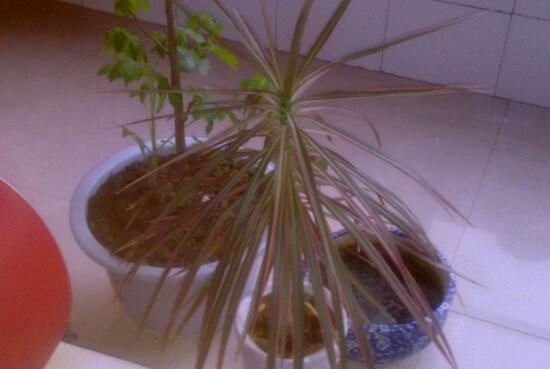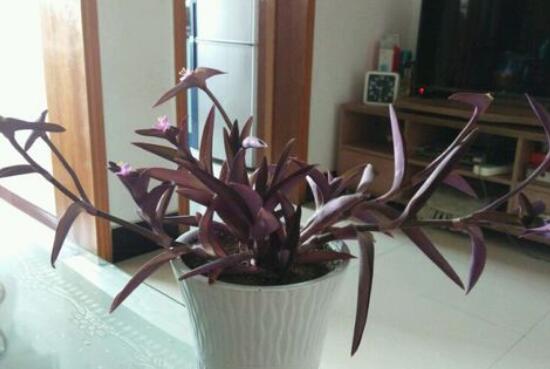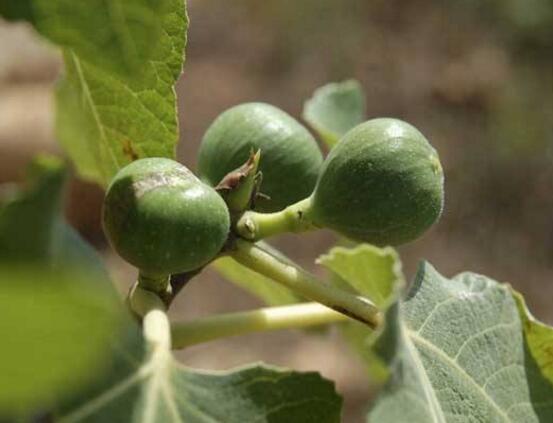What about the yellowing of millennium wood leaves, reducing watering / replenishing light / changing basin soil
Thousand-year-old wood, a highly ornamental plant, is not only good-looking, but also has good medicinal value, and is deeply loved by flower friends. However, although the thousand-year-old wood is beautiful, once due to improper maintenance, it leads to the phenomenon of yellow leaves, which will seriously affect the ornamental quality of the plant. So, what about the yellowing leaves of millennium wood? In this regard, the editor summed up 5 reasons, let's go and have a look!
First, the thousand-year-old wood leaves turn yellow, look for the cause.

As a common potted plant, the breeding method of millennium wood is not difficult, but there are many beginners, they often have improper maintenance, which can easily lead to the emergence of leaf yellow. In view of the yellowing of thousand-year-old wood leaves, the editor sorted out five causes and treatment methods for the yellowing of thousand-year-old wood leaves. Let's move on.
Second, the causes and solutions of yellowing of millennium wood leaves.
1. Environmental mutation
There are only a few reasons for the yellowing of millennium wood leaves, but the first thing we should consider is the environment. Nowadays, most of the millennium wood of flower friends are purchased online, which can easily lead to a large geographical span, millennium wood can not adapt for a while, and the symptoms of leaf yellow appear.
The solution: it's simple to ask the seller about the growth environment before the millennium wood, and then we change the environment at home until the millennium wood is fully adapted. After a period of normal maintenance, the leaves of thousand-year-old wood will be restored.
2. Too much watering
Thousand-year-old wood has a strong demand for water. In the process of breeding, we should water it frequently and keep it moist at all times. However, flower friends can not pour too much water, because thousands of years of wooden bogey stagnant water, once the water is too much, it will cause fallen leaves or leaf tip yellowing phenomenon.
Solution: should reduce watering, and then move the potted plants to the sun, so that the water evaporates quickly, of course, the light can not be too strong.
3. Too little light
Thousand-year-old wood likes light, and it needs sufficient light at all times except that it needs proper shading at noon in summer. If the thousand-year-old wood is placed in a dark place for a long time, resulting in insufficient light, it is easy to cause the leaves to turn yellow and dry.
Solution: if it is lack of light, it is very simple, just supplement the light. In this regard, the editor suggested that flower friends can plant millennium pots to places with plenty of light, such as balconies and sunny windowsills.
4. Fertilization leads to
In the process of breeding, in order to improve the ornamental value of thousand-year-old wood, many flower friends will apply high potassium nitrate fertilizer during the growing period, in order to sprout more side branches and make the crown more beautiful. However, this kind of fertilization will lead to the gradual withering and yellowing of the leaves at the base of the thousand-year-old wood.
Solution: in this situation, it is very simple to get rid of the yellow leaves. After all, this is done on purpose.
5. Soil alkalinity.
If the above points can be excluded, then the yellowing of thousand-year-old wood leaves may be caused by the soil partial alkali. It is understood that the thousand-year-old wood likes acidic soil, once the soil is alkaline, or long-term irrigation of pure water leads to soil alkali, it may cause leaves to yellowing.
Solution: if it is a soil problem, it is very simple to replace the basin soil and replace the thousand-year-old wood with acidic soil rich in humus and good drainage.
Generally speaking, millennium wood is easy to raise, but it will go wrong if you don't pay attention to it. However, after reading the full text, I believe you have a clear mind, the leaf yellow problem can be solved in accordance with the above method. With regard to the yellowing of thousand-year-old wood leaves, the editor has introduced this, hoping to give you some help.
Four causes of yellowing of thousand-year-old wood leaves (with solutions)
The thousand-year-old wood is gorgeous at night and has a beautiful plant shape, so many people like to plant it to beautify the home. The maintenance of the thousand-year-old wood is relatively simple, but if we do not pay attention to it, there will also be the problem of yellowing leaves. Let's take a look at the reasons for the yellowing leaves of the thousand-year-old wood. How to solve it:
The reason why the leaves of thousand-year-old wood turn yellow:
1. Soil alkalinity.
Thousand-year-old wood culture has certain requirements on the soil, which can not be planted in alkaline soil, which will cause leaves to yellowing.
2. Too much watering
The basin soil for a thousand years of wood growth must be kept moist, but too much water or stagnant water in the basin will cause fallen leaves or leaf tip yellowing.
3. Too little light
The millennium wood is a semi-shade plant, which can not stand the hot sun exposure in the north, but the leaves in the completely shaded place are easy to yellowing.
4. Fertilization leads to
In order to improve the ornamental value of thousand-year-old wood, many people will apply high potassium nitrate fertilizer during the growing period, so that the main stem of thousand-year-old wood grows taller and taller, and the basal leaves gradually wither and yellow, and the crown will be more beautiful through short truncation.
The solution to the yellowing of millennium wood leaves:
1. The yellowing of leaves caused by planting thousand-year-old wood in alkaline soil can be changed to acidic soil rich in humus and good drainage.
2. The yellowing of leaves caused by too much watering of thousand-year-old wood should be reduced and properly let the thousand-year-old wood bask in the sun.
3. If the thousand-year-old wood shines too little and the leaves turn yellow, you can move the thousand-year-old wood to a sunny place, but it should not be placed in a place where the sun is too strong.
When the millennium wood is not properly maintained, it is easy to yellowing leaves, which will affect its ornamental value. The causes and solutions of yellowing leaves of millennium wood are summarized to everyone, hoping to help you.
How to raise millennium wood, the breeding methods and precautions / light should be sufficient.
Thousand-year-old wood, also known as red bamboo, its slender leaves, light red to bluish purple, gently fluttering in the breeze, looks very beautiful. In life, because the thousand-year-old wood is easy to raise and has strong plasticity, so many flower friends want to raise it, so how to raise it? In this regard, the editor carefully sorted out the breeding methods and matters needing attention of millennium wood, very detailed, friends who want to raise should not be missed.
First, how to raise the thousand-year-old wood and understand the habits
Thousands of years of wood like adequate light, moist environment, more shady, but not cold-resistant, in indoor breeding, in addition to placing it in a place with good light, it should also be properly watered, and warm measures should be taken in the cold winter. As for soil, acidic soil rich in humus and well drained is required. Therefore, how to raise thousand-year-old wood is very simple to meet its growth habits.
II. Culture methods and matters needing attention of millennium wood
1. Soil
How to raise millennium wood, the soil should be re-selected first. Everyone bought the thousand-year-old wood potted plants. although they can grow normally without changing the soil, the soil is very cheap. if you want the thousand-year-old wood to grow well, you'd better reselect the soil and choose acidic soil rich in humus and good drainage.
2. Lighting
Light is the key to the growth of millennium wood, it is a semi-shade plant, it can not stand strong light exposure, nor can it lack of light. Therefore, when breeding indoors, the thousand-year-old wood should be placed in a place with sufficient scattered light, so as to keep the leaves tall and straight.
Note: the strong light of the thousand-year-old wooden bogey should be properly shaded at noon in summer, but it can not be completely in the shade, which will lead to the yellowing of the leaves of the thousand-year-old wood and affect the normal growth of the plant.
3. Temperature
How to raise millennium wood, it is also necessary to adjust the temperature properly. It is understood that the millennium wood likes the warm environment, the most suitable growth temperature is 20-35 ℃, want it to look good, it is best to maintain this temperature.
Note: the thousand-year-old wood is not cold-tolerant, the winter temperature should not be lower than 10 ℃, otherwise the plant will be frostbitten or even die!
4. Watering
Water is the source of life, so watering is an essential part of the breeding method of millennium wood. It is understood that the millennium wood has a strong demand for water, and in the process of breeding, we should water frequently and keep it moist at all times. However, it is also necessary to control the amount of water, not stagnant water, otherwise it will also cause fallen leaves or yellow leaves.
Note: it is certainly not possible to water the millennium wood too much, but even less, because if the plant is short of water, it is easy to have fallen leaves or yellowing leaves, so we must water them in the right amount.
5. Fertilization
In the process of breeding millennium wood, many people can not raise it well, in fact, it is not done well in terms of fertilization! Thousand-year-old wood does not have a high requirement for fertilizer, and it is generally required to apply thin fertilizer to it. It must not be fertilized too much, otherwise it is not conducive to plant growth.
Note: to apply fertilizer to millennium wood, in addition to not applying more, raw fertilizer and concentrated fertilizer should also be kept in mind, but general nitrogen fertilizer is OK.
6. Pruning
Millennium wood is a kind of foliage plant, which will grow very luxuriantly when water and fertilizer are suitable. At this time, in order to keep the overall beauty of the plant, we need to prune it properly, such as cutting it short, so that the plant can sprout lateral branches better, and the crown of the plant will be more beautiful. At the same time, we also need to cut off the withered and yellow leaves of the plant.
7. Pest control
Although the thousand-year-old wood has strong adaptability and is not vulnerable to diseases and insect pests, it will also grow insects and get sick because of various reasons in the process of breeding. Among them, the main diseases are anthracnose and leaf spot, and the main pests are shell insects, which will endanger the health of plants. So once discovered, should immediately spray medicine for control, as for what to spray, you can refer to the thousand-year-old wood pest control.
- Prev

What to do if the leaves of Zizhu plum turn yellow, supplement light / increase water and fertilizer application / cut root weight planting
Purple bamboo plum, a highly effective plant, not only grows good-looking, but also purifies the air and beautifies the home, but also has a good use in medicine. Such a plant, naturally raised by many people at home, but in the breeding process, a little careless, it will appear the phenomenon of yellow leaves. that
- Next

How to breed fig, fig propagation method/cuttings/ramets/layering
Fig is a well-known plant, and many people cultivate it in various regions of our country. As fig farming increases, people are more concerned about its reproduction. How do figs reproduce? In fact, it can be divided into three types: cuttage, ramets and layering.
Related
- Fuxing push coffee new agricultural production and marketing class: lack of small-scale processing plants
- Jujube rice field leisure farm deep ploughing Yilan for five years to create a space for organic food and play
- Nongyu Farm-A trial of organic papaya for brave women with advanced technology
- Four points for attention in the prevention and control of diseases and insect pests of edible fungi
- How to add nutrient solution to Edible Fungi
- Is there any good way to control edible fungus mites?
- Open Inoculation Technology of Edible Fungi
- Is there any clever way to use fertilizer for edible fungus in winter?
- What agents are used to kill the pathogens of edible fungi in the mushroom shed?
- Rapid drying of Edible Fungi

